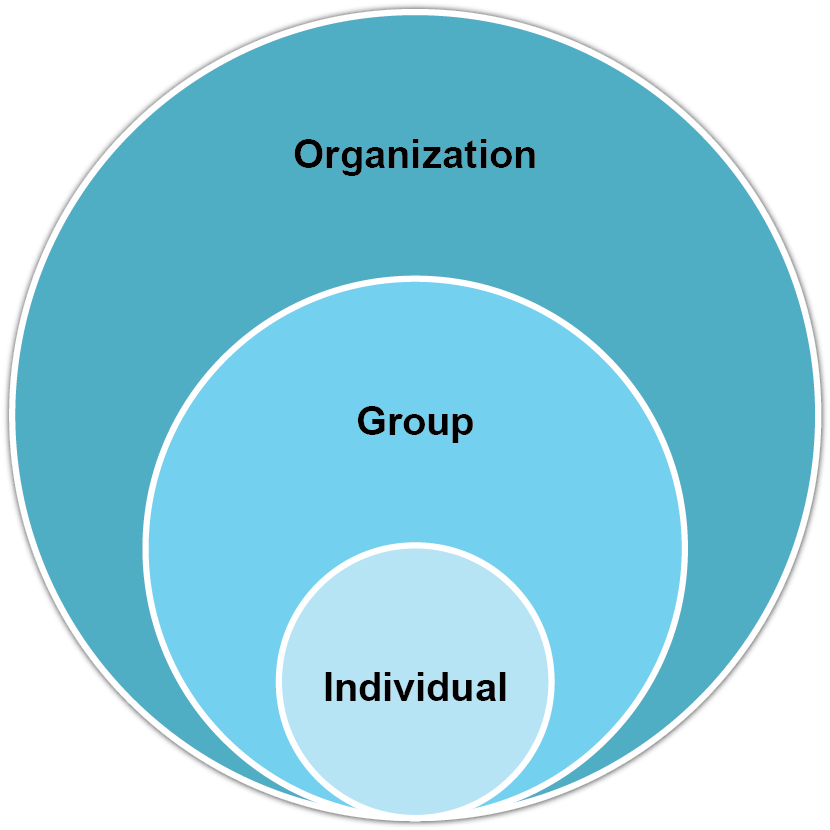1.2 What is Organizational Behaviour?
Those who study organizational behavior—which now includes you—are interested in several outcomes such as work attitudes (e.g., job satisfaction and organizational commitment) as well as job performance (e.g., customer service and counterproductive work behaviors). A distinction is made in OB regarding which level of the organization is being studied at any given time.
There are three key levels of analysis in OB. They examine the following:
- the individual,
- the group, and
- the organization.
 Here’s an Example
Here’s an Example
If I want to understand my manager’s personality, I would be examining the individual level of analysis. If I want to know about how my manager’s personality affects my team, I am examining things at the group level. Now, if I want to understand how my organization’s culture affects my manager’s behavior, I would be interested in the organizational level of analysis.

While this book uses a psychological lens to examine communication and other behaviours in the workplace, it is also important to acknowledge that OB draws from other disciplines to create a unique field. As you read this book, you will most likely recognize OB’s roots in other disciplines. For example, when we review topics such as personality and motivation, we will review studies from the field of psychology. The topic of team processes relies heavily on the field of sociology. In the chapter relating to decision making, you will come across the influence of economics. Even medical science contributes to the field of organizational behavior, particularly to the study of stress and its effects on individuals.
References
This section is adapted from:
What is organizational behaviour? from Organizational Behavior (2017) by University of Minnesota and is licensed under a Creative Commons Attribution-NonCommercial-ShareAlike 4.0 International License, except where otherwise noted.

